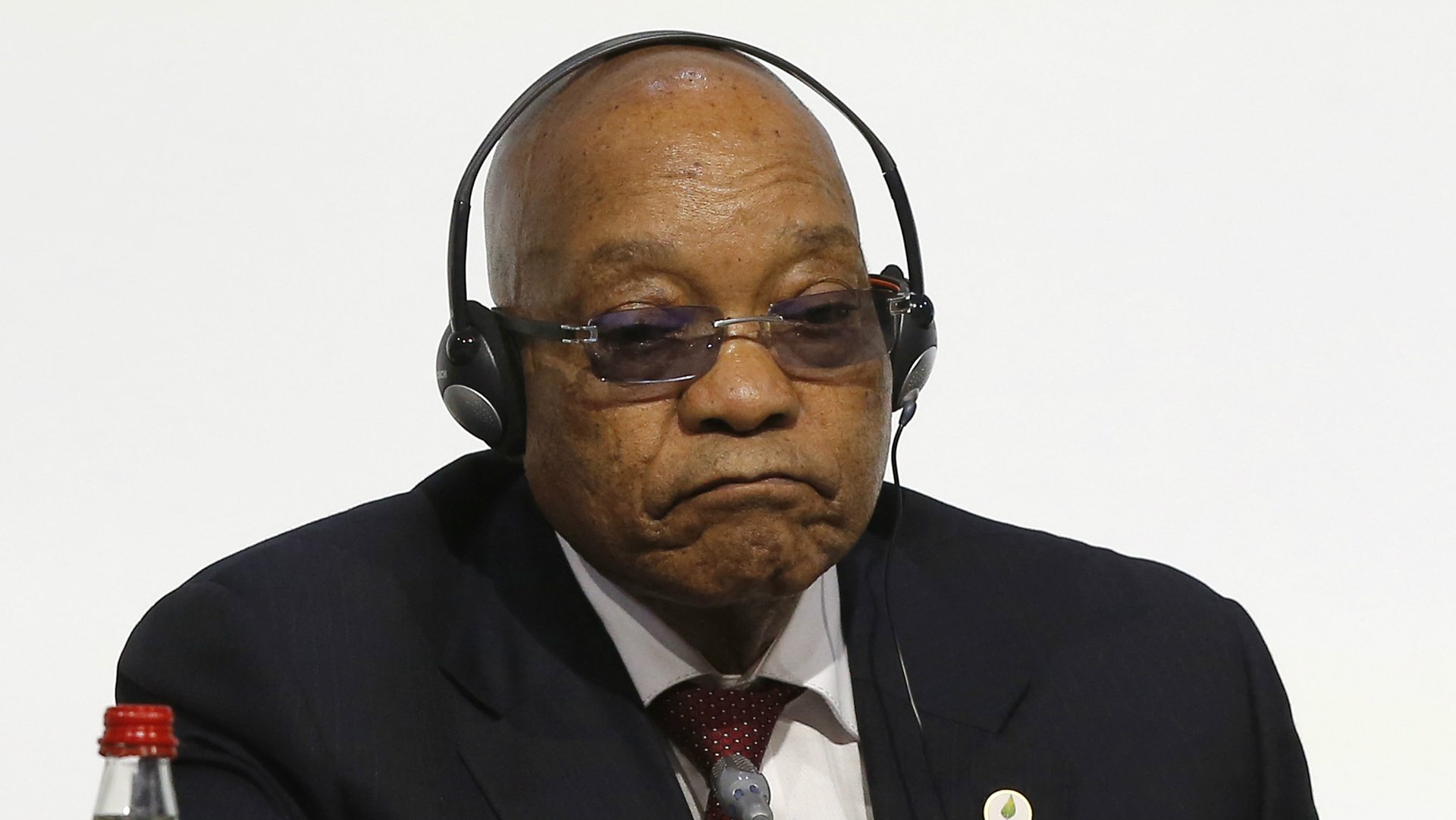Jacob Zuma, the anteater’s snout, and the danger to South Africa’s future
The years of the Zuma administration have been especially challenging in bizarre and inventive ways that often leave one feeling as though South Africans were like – to borrow a phrase from Imraan Coovadia’s essay “How they see us” – “ants observing the appearing and disappearing snout of the ant-eater which has established itself outside our burrow.”


The years of the Zuma administration have been especially challenging in bizarre and inventive ways that often leave one feeling as though South Africans were like – to borrow a phrase from Imraan Coovadia’s essay “How they see us” – “ants observing the appearing and disappearing snout of the ant-eater which has established itself outside our burrow.”
I find Coovadia’s analogy particularly instructive regarding events of the past week—the axing of minister of finance Nhlanhla Nene and the appointment of David “Des” Van Rooyen, and his subsequent removal from the position by the president on Sunday, and the re-appointment of Pravin Gordhan who served as finance minister from 2009 to 2014. You could not script such a twist of events nor could you have anticipated the free fall of the rand and the billions in losses at the Johannesburg Stock Exchange (JSE) after the announcement of Van Rooyen’s appointment.
The market reaction to the news gave an unprecedented criticality to the usual shenanigans of president Jacob Zuma. In fact, by the appointment of Gordhan last Sunday and with the precarious state of our currency, it became very clear that the snout of our president had appeared and, as suddenly, disappeared from the burrow of our treasury. And it sent something of a chill down our collective spines. We had known president Zuma was a dangerous man but none of us had suspected that he was as dangerous as dumping the country and our collective aspirations and futures to appease his patronage network and, by extension, his personal gain.
We had known, even viscerally, that something was awfully amiss when our erstwhile president, Zuma, was found by the public protector’s office to have unlawfully benefited from non-security features in the estimated 200 million rand ($13 million) “security upgrades” project at his private home in Nkandla; and his exoneration of all responsibility by the police minister for what had then been perceived as a betrayal of the most vulnerable south Africans by the president. We had observed, as it were, “the appearing and disappearing snout of the ant-eater which has established itself outside our burrow.”
We had a sense it was already there when the then acting head of the National Prosecuting Authority (NPA) Mokotedi Mpshe dropped the 783 charges of corruption, money-laundering and racketeering against Zuma before he ascended to the presidency; and in the subsequent dismantling of the Scorpions which had instituted the charges to begin with and replacing them with the Hawks—a police unit which would be answerable to the executive and by extension our president.
We have observed the tinkering with the public broadcaster SABC, which is publicly perceived as nothing more than a mouthpiece for the ruling party and the state. The “snout” has also been the centrepiece in woes currently plaguing the South African Airways (SAA).
However, it wasn’t until recently, with the axing of Nhlanhla Nene, that the menace of the snout gained its full terrifying effect. In this final act, the president showed his full hand and, by doing so, shook even the docility of his own party’s loyalists out of indifference. It is not only that our president is corrupt—this we have lived with, even if uncomfortably, since the beginning of his tenure in 2009—but it is the extent to which he is able to dismantle all plausible gains made by our young democracy for personal gain that one gets the sobering effect of having a leader of such dubious moral character.
The truth of the matter is that our treasury is one of the last pillars of our democracy which has seemingly survived the menacing snout Zuma and a week ago it nearly eroded from the vehement greed of our president and his shadowy patronage network, which he has used to fortify the scaffolding on which he has rested his power.